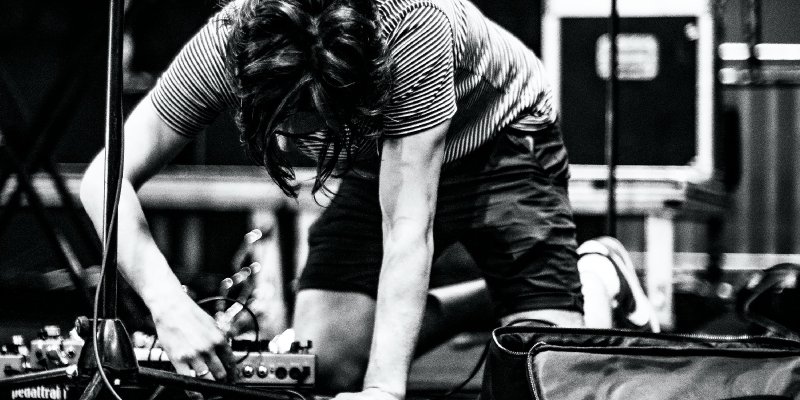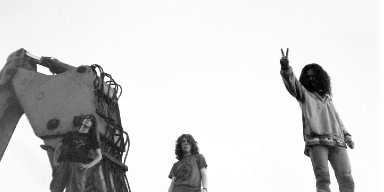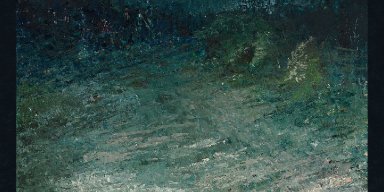
Photo by Adi Goldstein on Unsplash
In the relentless pursuit of originality, metal guitarists constantly push the boundaries of sound. Originally designed in 1967 to mimic the effect of a hand-controlled mute on a trumpet, the wah pedal is now an essential tool on the metal pedalboard. While the wah pedal is traditionally associated with classic rock and expressive solos, its potential in metal extends far beyond these confines.
Innovators in the genre have discovered that this simple device can transform their sonic landscape in unexpected ways, carving out new textures and dynamics that challenge the status quo.
- Rhythmic Filtering
Rhythmic filtering with the wah pedal can transform a metal riff into a dynamic, pulsating force. Instead of the conventional sweeping, rhythmic filtering involves timing the pedal’s movement to sync with the track's rhythm. This technique creates a choppy, staccato effect that can turn even simple riffs into complex, syncopated grooves.
To achieve this, begin by selecting a riff that has a strong, repetitive rhythmic pattern. Engage the wah pedal and start experimenting with moving the pedal in time with the beat. For instance, moving the pedal down on the downbeat and up on the upbeat can create a tight, percussive feel. Adjusting the speed and depth of the pedal movement can further refine the effect, allowing for subtle variations that keep the riff engaging.
One of the standout examples of rhythmic filtering is found in Tom Morello’s work with Rage Against the Machine, where the wah pedal becomes a crucial element of the rhythmic structure. Applying this technique in metal can add a layer of complexity and drive, making the guitar interact with the drums in a more intricate way.
This approach not only enhances the groove but also ensures that the guitar tone cuts through the mix with clarity and aggression. A great tip suggested by Ted S. at thegreatestsong.com is to choose a wah with an expressive treble. The Morley 20/20 or the Xotic XW-1 with a low-pass filter on would be ideal.
- Ambient Soundscapes
Utilizing the wah pedal to craft ambient soundscapes in metal introduces a depth and atmosphere that transcends traditional riff-based compositions. This technique involves blending the wah with reverb and delay effects to create expansive, evolving sonic textures. Instead of using the wah for its typical tonal sweeps, it becomes a tool for gradual modulation, shifting the guitar’s frequency spectrum in a slow, controlled manner.
Start by setting a substantial reverb to generate a vast, echoing environment. Next, add a delay with a moderate feedback setting to introduce repeating echoes. Engage the wah pedal and use slow, deliberate movements to manipulate the frequencies, creating a sense of motion within the static ambient space. This method allows the guitarist to morph the sound subtly, providing a haunting, otherworldly quality that can serve as an intro, interlude, or atmospheric layer beneath heavier sections.
A prime example of this technique can be heard in the works of post-metal and atmospheric black metal bands like Deafheaven and Alcest. These legends utilize ambient soundscapes to evoke emotion and build tension, contrasting sharply with the genre’s more aggressive elements.
- Synth-like Tones
Creating synth-like tones with a wah pedal involves pairing it with other effects to transform the guitar’s sound into something that mimics synthesizers. This approach opens up a world of sonic possibilities, blending the organic qualities of guitar with the futuristic textures of electronic music. Start by combining the wah pedal with a pitch shifter to alter the pitch of your notes dynamically. Adding a fuzz or distortion pedal can further shape the sound, giving it the gritty, processed edge often found in synth patches.
Engage a modulation effect, such as a chorus or flanger, to introduce movement and depth to the tone. The wah pedal, when used slowly, can act as a manual filter sweep, akin to the filter controls on a synthesizer. Moving the wah pedal in sync with your playing creates a sweeping, resonant effect that can make the guitar sound like a synth’s filter cutoff is being modulated in real time.
This technique is especially effective in genres like industrial metal and progressive metal, where blending electronic and metal elements can create a distinctive and modern sound. Bands like Nine Inch Nails and Periphery have experimented with similar methods, pushing the boundaries of what a guitar can sound like.
- Feedback Manipulation
Manipulating feedback with a wah pedal offers metal guitarists a powerful way to control and shape the sonic chaos of feedback into musical expression. This technique involves using the wah pedal to modulate the frequency spectrum of the feedback, creating dynamic, vocal-like effects that add an expressive layer to performances.
Begin by positioning your guitar close to the amplifier to induce feedback. Once feedback is achieved, engage the wah pedal. Slowly sweep through the pedal’s range to find the sweet spots where the feedback resonates most intensely. These resonant points can be held and modulated by moving the pedal back and forth, effectively ‘playing’ the feedback like an instrument.
Experimenting with the pedal's position can reveal different harmonics and overtones, allowing you to craft intricate feedback textures. For instance, moving the pedal in short, quick bursts can produce stuttering, glitch-like effects, while slow, deliberate movements can create haunting, siren-like sounds. If you’re moving it in quick bursts, try to find a wah pedal that fits your pedalboard to avoid knocking it over.
This is also a technique employed by Tom Morello as well as Adam Jones of Tool, This effect gives a dramatic, almost otherworldly dimension to their music. By mastering feedback manipulation with the wah pedal, metal guitarists can transform uncontrolled noise into a controlled, expressive element, enhancing the emotional intensity and uniqueness of their sound.
- Bass Guitar Applications
Utilizing a wah pedal on bass guitar introduces a new dimension of sound and versatility to the low end of metal music. This approach allows bassists to break free from traditional roles, adding rhythmic and melodic complexity that complements the overall band dynamic.
When applied to bass, the wah pedal can produce a wide range of effects from deep, growling sweeps to sharp, percussive accents. Start by setting your wah pedal to a more subtle sweep to ensure the bass frequencies are
not overly harsh. Engage the pedal while playing syncopated rhythms to create a pulsating groove that interacts dynamically with the drums and guitar. This technique can transform a standard bassline into a driving, funk infused powerhouse, ideal for bridging sections or adding emphasis.
For solos or standout sections, using a wah pedal can make the bass cut through the mix with a pronounced, vocal-like quality. Players like Cliff Burton of Metallica famously used the wah pedal to add expressive solos and lead parts to his bass playing, elevating the instrument’s role beyond mere rhythm support.
Moreover, pairing the wah with distortion or fuzz pedals can create a monstrous, synth-like growl, perfect for heavy breakdowns and intense riff sections. This combination allows bassists to explore new sonic territories, making the bass not just a foundation, but a featured, attention-grabbing element in metal compositions.
Reviews - Interviews - Promo - Radio Play
Contact zach@metaldevastationradio.com












